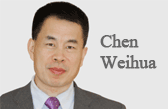New challenges for new leaders
How can China realize "the Chinese dream" which President Xi Jinping called "the great rejuvenation of the Chinese nation?" With complete transition of China's new leadership, headed by Xi and Premier Li Keqiang, it is appropriate to describe this grand vision and to set forth the challenges that must be met.
The Chinese dream is a moderately well-off (xiaokang) society, such that all citizens, rural and urban, enjoy high standards of living in all aspects of life and society. This includes doubling 2010's GDP per capita by about 2020 (approaching $10,000 per person), completing urbanization by about 2030 (roughly 1 billion people, three quarters of China's population), achieving modernization (China regaining its position as a world leader in science and technology as well as in economics and business), and appreciating Chinese civilization and culture (China participating in all arenas of human endeavor).
In making this vision a reality, China's new leaders face many challenges. I here list 35 such challenges (there are more), catalogued under five categories, so that global readers can grasp their scope and complexity and can assess their difficulties and progress.
Socio-economic
Economic and social disparities. In little more than 30 years, China has gone from being one of the world's most equal countries (though everyone was equally poor) to one of the world's most unequal countries (though more people have been brought out of poverty than at any other time in history). The gaps between the rich and the poor in China are now larger than those in India and the US. Farmers demand higher income and better social services. Urban workers demand higher pay and better working conditions. The residency (hukou) system that restricts migrant workers from accessing healthcare and education has become untenable and destabilizing.
Macroeconomic transformation. China must shift to a consumption-driven economy, more dependent on people enjoying higher standards of living and less dependent on government-financed fixed investment and an unsustainable surplus of exports over imports.
Microeconomic transformation. China's old economic model of low-cost, cheap-labor, assembly-type manufacturing, which generated China's remarkable development, has reached the end of its historic cycle. To pay workers higher wages, Chinese companies must produce higher gross margins by providing more value-added benefits, via technology, branding or service. (Companies with high gross margins are much harder to build than those that are based on low cost and cheap labor.)
Market versus government. How should China's resources be allocated optimally? Where can the market function more efficiently and where can government? The obstacles to rational analysis today are not ideological but vested interests. (Most economists favor more market mechanisms, but arguments resisting reform are three-fold: market forces increase social disparities; market economies are more easily disrupted by financial turmoil, for example, 2008-2009; and a strong government preserves China's socialism.)
State-owned enterprises. What is the proper role of China's large, powerful SOEs? How much monopoly power should they enjoy? Some view SOEs as a bulwark of government control and a symbol of socialism. Others as a blockage of reform and a hindrance to productivity.
Allocation of resources. How to optimize among sectors? How much to spend, relatively, on industry, agriculture, consumer consumption, healthcare, education, science, military/defense, culture?
Financial ambitions. China intends to become a major financial power, with Shanghai as a world financial center. How then to deal with currency exchange rate reforms? How to enable China's yuan to become fully convertible and to become an international reserve currency?
Interest rate reforms. How to allow the market to play a larger role in setting interest rates? Currently, with interest rates controlled by the government, spreads between what big banks borrow (from citizens) and lend (to companies) generate high profits, which are in effect a tax on citizens.
Pollution and environmental protection. How to balance economic growth and development with environmental degradation and pollution? Environmental activism is becoming increasing vigorous in China. In fact, many "mass incidents" (that is, protests) are pollution induced.
Sustainable development. How can China become less dependent on foreign oil and other imported resources? How to assure that water will be adequate for consumption and industry?
Population dynamics. What is the optimum family planning policy? When should the one-child-per-family norm be amended or terminated? What is the ideal population for China?
Intellectual property rights. How can IPR be sufficiently protected to uphold the rule of law and to stimulate indigenous innovation? How to enforce IPR laws?
- PLA vows firm support for 'Chinese dream'
- Xi-Li vision of governance has Chinese Dream in sight
- Pursuing a dream for 1.3 billion Chinese
- 'Chinese dream' is Xi's vision
- 'Chinese dream' carries global significance
- From Harvard to realizing the 'Chinese dream'
- Volunteers build green 'China Dream'
- A dream gives people vision for the future



















